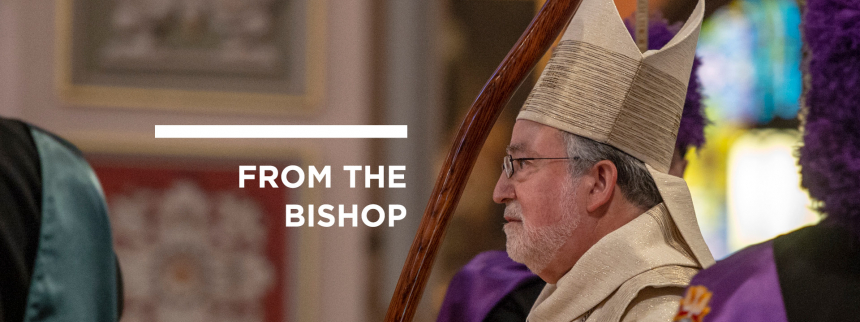
While attending St. Polycarp School in Stanton, the first time a television was ever wheeled into the classroom was for watching the various Apollo space missions. With each launch we were brought closer to the national objective: to be the first to put a human person on the moon. I remember my classmates and me, with eyes wide open, seeing the earth spinning in dark space. It was the first time humanity had ever glimpsed our planetary home. The vastness of the world suddenly became much smaller as the boundless reaches of the universe enveloped the bright blue orb.
Having the television in the classroom was as momentous as the events transmitted by the big, bulky, cathode-ray tube. This was a technological intrusion into a traditional academic setting filled with chalkboards, bulletin boards, pencil sharpeners, colored construction paper, glue, tape, Palmer method handwriting guides, mimeographed worksheets, thick textbooks straining the student satchels, shelves of dictionaries as well as other reference books, a blue and white plaster statue of the Blessed Mother in the corner, and a crucifix, front and center.
One technology — a video and audio transmitter — became the medium for watching further technological innovations, like the rockets soaring into space with human pilots transmitting their voices and visuals into the classrooms of middle school students. At the time this was thrilling, but there were concerns about bringing the “idiot-box” — as my father would say — into the classroom. Would it further learning or inhibit it?
Today, what was remarkable has receded into normality. So much of the world and our daily lives are mediated and interpreted by technological means. It was a modern cliché to say that any new device put “everything at your fingertips.” With the ubiquity of the mobile hand-held devices, the old cliché has become anachronistic. For some people, old as well as young, the hand-held device has become an appendage. The device seems connected to the fingers as the fingers to the hand, the hand to the arm, and the arm to the shoulder. Language no longer refers to fingertips, but to your phone or your device when speaking about convenience.
Technology has brought more of the world closer, even the universe seems closer. The latest James Webb space telescope probing deep space allows us to peer at colliding galaxies light-years away. The advances of technology have become so commonplace that we might not notice how they have morphed from tools for seeing and interacting with the world to becoming the way we understand the world as well as how we understand ourselves.
Recent research has many people asking questions about the addictive attraction of technological devices for young minds, and older minds as well. When certain behaviors become so compulsive and habitual that one cannot imagine living without something, this may indicate an addictive pattern that defines a person’s life or even a person’s identity. We easily recognize this pattern in those who have an addiction to alcohol or drugs. We dare not ignore the technological pull of devices that ping, buzz and light up one’s day with likes, tweets and alerts. Social media risks forming communities addicted to certain ideas, emotions, and plots that have little to do with reality. Technology once connected astronauts with middle school students. Now the latest innovations divide and demonize next-door neighbors.
Technological advances have helped us; they have also tempted us. They tempt us into believing the world really is at our fingertips; we can control and determine our lives according to our expectations, while at the same time the algorithms programmed into the devices tells us what those expectations should be. Too easily we tend to believe we are the masters of our world, not the children of a loving God created to know, love and serve him in this life so to be happy with him in the next.
The technological and scientific climate that continues to amaze and alarm us, has also sown seeds of doubt and skepticism in the minds of many young people. There is a growing concern that children in middle school feel they must choose between religion and science. As the young mind begins to see beyond the influence of the home and starts to build a moral sense of self, he or she wonders whether to look to the crucifix on the wall or the small buzzing, blinking device in one’s hand.
Catholic education does not insulate young minds from the seeming tensions between faith and science; it guides and accompanies young people to see reason and science as tools created to help us grow in the knowledge and love of a Creator who reveals his power through mercy. The wisdom literature of the Old Testament teaches us that the fear of God is the first step toward wisdom (cf. Prov 9:10). In this light, science and technology best serve young people and all of us when they help us experience the awesome dimensions of God’s creation and the unimaginable scope of God’s wisdom and mercy.
Many can be drawn to the creed that science explains all there is to know about the world and, if not now, then someday it will explain all that can be known. This promotes a false expectation and a vain presumption too often reinforced by the devices at our fingertips. True scientific pursuits and technological engineering begin with a sense of humility, seeing ourselves as once my classmates and I did when we first witnessed with awe the world spinning in the unbounded celestial symphony of a universe whose rhyme and reason rested in the palm of God’s hand.

